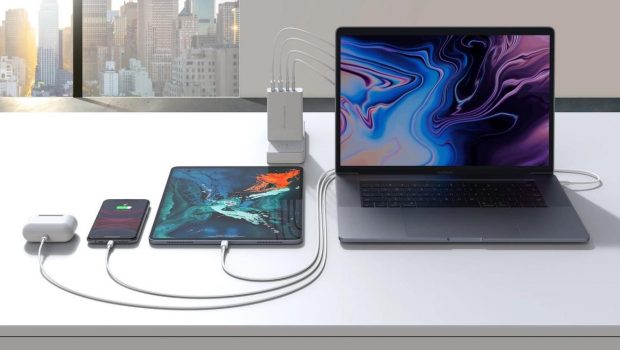What is Gallium Nitride (GaN) next-generation charging technology?
Over the past year, you may have noticed that a lot of companies that make USB chargers are talking about GaN or gallium nitride technology.
But what is this GaN/gallium nitride technology? What are the benefits of GaN? And should you upgrade all your chargers today?
Also: Anker's latest GaNPrime power products: A roundup of safe, fast, and sustainable charging
To answer these questions, we need to go on a little journey, one that touches gently on chemistry, physics, and electronics.
Gallium nitride (the chemical formula for this is GaN) is a crystal-like semiconductor material with special properties. GaN has been used in electronics for decades, starting with LEDs in the 1990s, where it was used to emit light to light TVs and computer displays before later finding its way into solar panels, where it was used to convert light into electricity.
Now GaN has found its way into transistors and is replacing the industry's previous favorite semiconductor material -- silicon.
A transistor is a tiny electronic switch that opens and closes really fast, and GaN has several advantages over silicon when used in transistors. Not only are GaN transistors smaller than silicon transistors, but they can carry more power, switch faster (around 40 million times a second, roughly four times faster than silicon transistors), and they are much more power efficient.
While silicon transistors have a power efficiency of around 87%, GaN transistors boost this efficiency to over 95%.
The reduction in transistor size means that newer GaN USB chargers can be physically smaller than the older silicon technology chargers. And while it's nice to have smaller chargers, it is the increased efficiency that is the most important factor when it comes to USB chargers because the more efficient an electronic component is, the less waste heat it generates.
And the less waste heat generated, the lower the chances of overheating and the less cooling that is required to keep the charger operating safely.
Consumers are, understandably, concerned when chargers feel hot to the touch. While it is common for chargers that use silicon transistors to get to the point of almost being too hot to touch, I find it rare for a charger using GaN technology to feel mildly warm.
The faster switching also means that a GaN transistor inside a charger can have better control over the charging and respond to events such as overheating or overvoltage much quicker than older transistors could.
This greater efficiency and faster switching are critical for modern USB-C chargers because USB-C carries even increasing power loads, with 100W loads now being commonplace and 240W chargers soon to be a reality.
OK, so GaN USB chargers have a lot of advantages. Does this mean you should throw away your old chargers and upgrade?
If you are happy with your existing chargers, stick with them until you feel the need to upgrade, and then choose a new GaN USB charger that suits your needs. If there's nothing wrong with your chargers, and they do what you want them to do, it's a shame to turn them into e-waste.
However, if you need a smaller, cooler USB charger today, then I'd highly recommend choosing a GaN charger because you get all the benefits of modern technology for little additional cost.
How can you tell if you are buying a GaN charger? Don't worry, it'll say all over the marketing!
Also: Using the wrong USB-C cable can damage your tech. Here's how to avoid that
If you're looking for a GaN charger, two companies I recommend taking a look at are Anker and UGreen. Both make high-quality chargers and have a great selection, from small, portable charging units to bigger desktop chargers.








Gloss